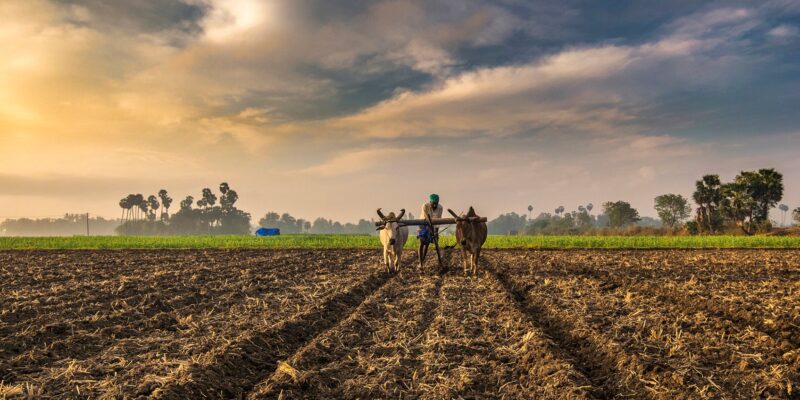As cities have gotten more crowded and polluted, many individuals have decided to live a slow life farming. While this lifestyle has lower costs and is more healthy, relocation and starting a farm can be challenging.
To ensure your new farm life is smooth, you must have complete knowledge regarding farming. Here are a few farming essentials you should not forget:
Buy Suitable Land
While modern science allows almost any land to be cultivated, some lands perform better. Ensure that the farmland you buy has access to an abundant water supply and has a temperate climate.
The soil must have suitable acidity levels around pH 5 to 6 and sufficient salt and sodium content. Flat and less rocky land is also necessary for smooth farming as it allows even water distribution and lets machines run properly.
You can purchase farm land on the Hawaiian islands. Constant heavy rains make Hawaii’s soil rich, and the mild climate will allow you to grow tropical fruits that are high in demand, such as pineapples, papaya, and jackfruit.
Other American states suitable for farming include Kansas, Texas, and Wisconsin, as these states produce most of America’s agricultural products. They have well-developed farming facilities, and you can learn more about farming practices through their community.
Prepare Land Thoroughly
Every crop has different land preparation requirements, but they all require you to remove weeds and clear the land to allow efficient nutrient cycling. You can achieve this by pre-irrigating the land, so weeds and their roots are drowned out with water.
If water is scarce, consider soil solarising to remove weeds by covering the soil with a black tarp to increase its temperature.
After the land is cleared, you must level the field. One way to do this is through laser land leveling. In it, tractors are equipped with lasers that identify places where the soil needs to be removed and added. This step improves the field’s topography which later facilitates irrigation and drainage.
Use Suitable Irrigation Methods
Some crops, such as rice, require large amounts of water and suitable irrigation techniques to flood the land. You must also consider your area’s water supply when irrigating.
If the area has a limited water supply or you simply want to conserve water for sustainability, you should conserve it using drip irrigation. If your area faces heavy rainfall, you must factor in the water crops will receive from the rain; otherwise, you risk over-irrigating.
To make irrigation more efficient, you must level fields. This step allows water to flow continuously to the crops with minimum loss. You can also capture the runoff water through channels and ditches and reuse it for the second irrigation.
Choose the Right Crops
If you have limited access to water, choose crops like peas, lentils, and Brussels sprouts. If your land gets less sunlight, consider growing leafy green vegetables like spinach. Soil acidity also plays a vital role in crop growth, and you can add fertilizers to change pH levels.
It is better to plant crops suitable to the original soil levels and remain organic, so you don’t have to add artificial substances and ruin the soil’s health and surrounding environment. For alkaline soils, you can plant garlic and kale, and sweet corn and broccoli do better in acidic soil.
Not having your crop sold makes you lose profits, as they rot over time, so you must also factor in market demand prior to planting. Research markets and read farming magazines to find which crop is in demand. For instance, currently, potatoes are the most eaten vegetable in America.
Attend Farming Shows
Farming and agricultural shows in America are held year-round and throughout the country. They showcase new farming technology and modern agriculture methods. Attending such expos will allow you to pick up farming practices to increase crop yield and let you interact with other farmers and know their techniques.
You can also participate in the expos to show the crops you grow or the products you make from them. This can allow you to attract clients that directly buy your crop or products, so you do not have to spend time marketing or to travel to local farmer’s markets.
Farming School
You can stay up-to-date with the latest farming technology and resources by going for a formal degree. Farming schools offer multiple programs, such as agriculture and forestry specializations, animal science, and soil science.
These degrees last for three years but can be availed online so you can continue studying while working on your farm. Before enrolling in farming school, check if you qualify for government grants to make yourself financially stress-free.
Endnote
Starting farming is excellent for physical and mental health. You will have a better lifestyle and can connect with nature. However, farming is challenging, especially if you have no prior experience. If you’re planning to add some livestock to your farm, you can check out Real Industries Canada for the best equipment.
To ensure your farming experience remains smooth, you must buy suitable land, prepare fields, use suitable irrigation methods, choose the right crops, attend farming shows, and get a farming education. This will ensure you don’t make costly errors and have high yields of crops.














Comments